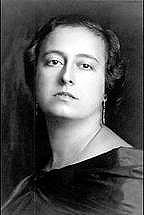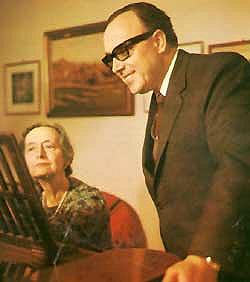Carlo Del Monte was born Heleni Barjau i Vallmitjana in the neighbourhood of La Sagrera in Barcelona, a son of the militant socialist Felipe
Barjau.
During the Civil War, his father was forced into French exile, and Heleni was interned with the rest of his family in a concentration
camp, before making a dramatic escape to Mexico in 1939, on the ship Sinaia.
He worked and paid his way through the Mexico City conservatory, beginning his career in comprimario roles at the Palacio
de Bellas Artes. As Arturo in Lucia di Lammermoor, he played opposite Callas and Di Stefano. Leading roles soon followed at
that theatre, where he enjoyed a particular triumph as Manrico in Il trovatore (1955).
Championed by his compatriot Victoria de los Ángeles, he obtained a Carnegie Hall audition in New York, which led to further study at the
school of La Scala, Milan (where he chose his Italian stage name); engagements in Paris; and his earliest and most celebrated recordings with de
los Ángeles for EMI – a much-praised Rinuccio in the classic Gianni Schicchi with Gobbi, under Gabriele Santini (1958); and
Alfredo in the 1959 La traviata with de los Ángeles and Mario Sereni, conducted by Tullio Serafin. One of his more unusual
engagements around this time was to sing Jacopo in I due Foscari at the Wexford Festival, conducted by Sir John Barbirolli.
Returning to Mexico after a serious eye operation in 1959, he went again to Spain in 1961, and lived in Barcelona – though he never sang
in the famous Teatre del Liceu, due to a ban there on Republican performers. It was in Barcelona, however, that he perfected his vocal technique
in fresh studieswith the soprano Conchita Badía, first singer of La Dolorosa on record and also Montserrat Caballé's
teacher. Later opera roles in Europe and Mexico included Duca in Rigoletto, Hoffmann, Pinkerton, and Rodolfo in La bohème.
 Conchita Badía
Conchita Badía
 Badía and Del Monte
Badía and Del Monte
He sang little if any zarzuela on stage, but the genre was certainly important to his recording career. Indeed, his working situation
in Spain was eased during the 1960's by a contract to record a series of zarzuela film soundtracks under Torroba for EMI-Hispavox, for
which actors played the roles on screen. These included the memorable versions of El huésped del sevillano, El caserío
and Maruxa; together with recordings of Luisa Fernanda, Bohemios, Gigantes y cabezudos and El joven piloto
(by Tellería).
Amongst his later recordings was one for Philips, as part of a large team of soloists in a zarzuela anthology under the unlikely but
highly galvanic baton of Igor Markevich (1967). In 1968, he finally made his debut at the Teatro de la Zarzuela in Madrid, in
Escudero's Basque opera Zigor, another work he recorded. By the end of 1969, his voice was showing signs of wear, and after
1970 he retired to Mexico City from which time his singing appearances were few.
With its fast, tight vibrato, its consistency and richness throughout the range, and its focussed emotional power, Del Monte's voice
is perhaps comparable in some ways to Carlo Bergonzi. But the sound is always unmistakably his own, and his zarzuela recordings –
pre-eminently the intensely moving El caserío – are a legacy fully worthy to stand beside the better-known opera recordings,
fine mementos of a musical and highly distinctive singer.
© Christopher Webber 2000